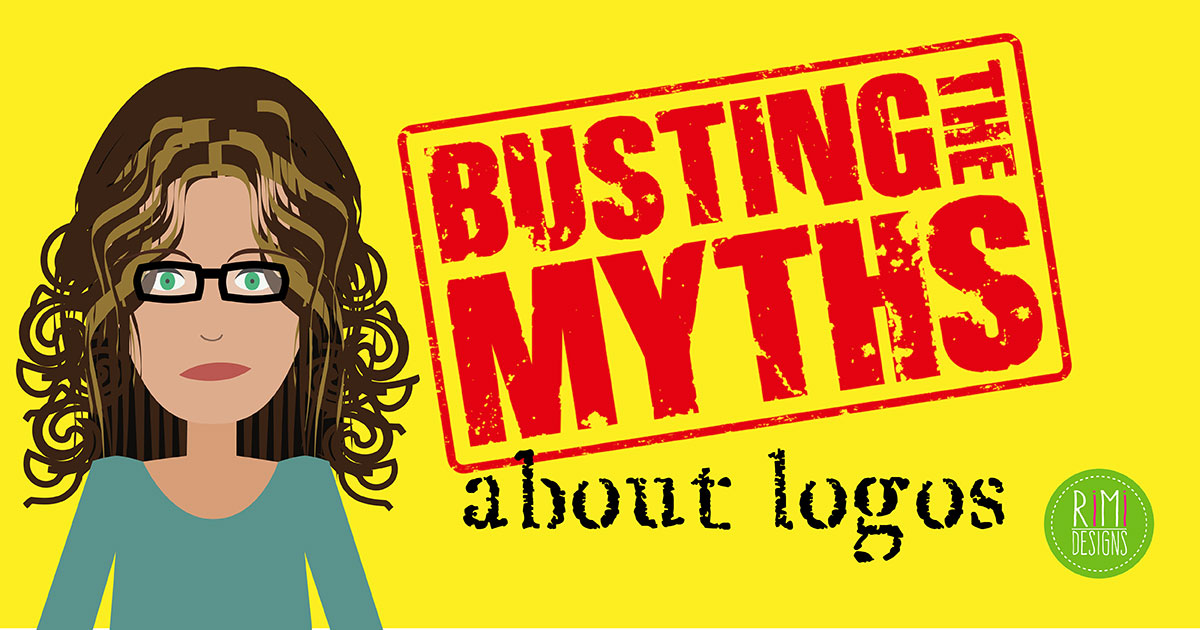
6 Common Myths About Logo Design
There is no other design format more misunderstood and mystified than the logo design. It seems everyone has a theory about what makes or breaks a good logo, but none of them seem to be working.
Here are 6 common logo design myths to be aware of and to avoid at all cost.
Myth #1: A logo has to reflect what the company does
 If a flag cannot tell you a lot about the country it represents, why should a logo tell you anything about a company? It shouldn’t.
If a flag cannot tell you a lot about the country it represents, why should a logo tell you anything about a company? It shouldn’t.
A logo is not a storytelling device — it’s a form of identification. Countries have flags, royal families have their crests and companies have their logos. They all serve a single purpose — to identify and differentiate their owners from everyone else in the crowd. Nothing more, nothing less.
Coca Cola, Apple, Nike — their logos tell absolutely nothing about what these companies do. But we all know what they stand for.
Myth #2: A logo must include a symbol
 Not really. Some of the most famous logos have no symbols at all, just well-crafted type. These logos are little more than plain type — yet nobody has trouble remembering and recognising them.
Not really. Some of the most famous logos have no symbols at all, just well-crafted type. These logos are little more than plain type — yet nobody has trouble remembering and recognising them.
However, this is not to say that logos should not carry symbols. Sometimes a symbol can become more memorable and ubiquitous than the company name itself, such is the case of Apple, Nike or Pepsi.
Other times, a symbol is just a hindrance, a superfluous decoration which doesn’t really add value or meaning.
Use a symbol if you need to represent something important to the company. If not, it’s best to consider more typographical solutions.
Myth #3: If your logo is great, it’s okay to only show the symbol
 Recognition comes from repetition. Repetition is a learning tool — so powerful that you will be able to recognise a grain of sand in the Sahara desert, provided you look at it every day, for years on end.
Recognition comes from repetition. Repetition is a learning tool — so powerful that you will be able to recognise a grain of sand in the Sahara desert, provided you look at it every day, for years on end.
But to make that work for logos, that means millions and millions of dollars invested in advertising and promotion. Unfortunately, not many companies enjoy the benefits of unlimited advertising budget. This is precisely why they should never use their symbols without the company name present. No matter how good the symbol is, nobody will know what it stands for and nobody will care.
Myth #4: A logo has to follow its established industry style
 There is a certain feeling of dread and boredom associated with most real estate logos. Nearly all companies use a house or a building as a part of their identity. Similarly, 9 out of 10 fashion logos are pretentious and stylish — black and white, elegant type, very few symbols or graphics. They all seem to be saving colour for the clothes.
There is a certain feeling of dread and boredom associated with most real estate logos. Nearly all companies use a house or a building as a part of their identity. Similarly, 9 out of 10 fashion logos are pretentious and stylish — black and white, elegant type, very few symbols or graphics. They all seem to be saving colour for the clothes.
Every industry has unwritten rules and expectations about how a logo should look. Nevertheless, for companies just starting out, there’s nothing worse than having a logo which looks everything but inventive and original.
Myth #5: A logo has to be “timeless”
 You cannot create a timeless logo intentionally — you can only make sure it’s not entirely based on fads, such as swooshes or glossy treatments, so it lasts longer than usual.
You cannot create a timeless logo intentionally — you can only make sure it’s not entirely based on fads, such as swooshes or glossy treatments, so it lasts longer than usual.
Like everything else, logos age. From time to time, they need to undergo plastic surgery to make them look less antiquated and more in line with current trends.
Companies like Shell, IBM, Xerox, Volkswagen and Coca Cola changed their logos nearly a dozen times so far, improving their look with each iteration. So don’t worry about creating a timeless logo. Create something that works now and there will be plenty of time to improve it later.
Myth #6: A logo has to be likable
 The purpose of a logo is not to provide eye candy, but to provide a unique signature that will become associated with the qualities of the company.
The purpose of a logo is not to provide eye candy, but to provide a unique signature that will become associated with the qualities of the company.
Whether people like or dislike the logo design has nothing to do with what they think about companies and organisations those logos stand for. Consider this. London Olympics is arguably one of the ugliest logos in history, but everyone associates it with its top sports event.
Customers do not care about logos — they care about what companies can or cannot do for them. So while your logo does need to employ some basic principles of good design, you don’t need the approval of friends, your aunt or next door neighbor before you put it out there. Just do it!
So what should a logo look like?
Well, it depends on who the client is, what their history is and where they’re trying to go. Are they a market newcomer trying to grab attention? Are they an established business seeking to show some tradition? Or maybe they’ve been out there for decades and need just a quick face lift. Just like a signature, a logo is entirely about the person behind the signature and very little about the person receiving it.
SOURCE: 99designs
A good logo should reflect the spirit of your brand. Need a professional looking logo for your business?



